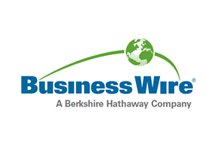Global Autonomous Emergency Braking (AES) System Market Trends, Forecast and Competitive Analysis Report 2021 - ResearchAndMarkets.com
The "Autonomous Emergency Braking (AES) System Market: Trends, Forecast and Competitive Analysis" report has been added to ResearchAndMarkets.com's offering.
The global autonomous emergency braking market is expected to grow with a CAGR of 22% from 2019 to 2024.
The future of the autonomous emergency braking market looks promising with opportunities in the passenger car, light commercial vehicle, and electric vehicle markets. The major drivers for this market are stringent government regulations, rising passenger and driver safety concerns, and increasing demand for electric and autonomous vehicles.
Some of the autonomous emergency braking companies profiled in this report include Robert Bosch, Continental, Denso Corporation, ZF Friedrichshafen, Hyundai Mobis, Aisin Seiki, Valeo, Delphi Automotive, Paccar, Texas Instruments, Autoliv, Knorr-Bremse, Mando Corporation, Analog Devices, and Wabco Holdings, and others.
Some of the features of 'Global Autonomous Emergency Braking (AEB) System Market 2019-2024: Trends, Forecast, and Opportunity Analysis' include
- Market size estimates: Global autonomous emergency braking market size estimation in terms of value ($M) shipment.
- Trend and forecast analysis: Market trend (2013-2018) and forecast (2019-2024) by application, and end use industry.
- Segmentation analysis: Global market size by component, technology, operating speed, application, end use, level of automation driving, and region.
- Regional analysis: Global autonomous emergency braking market breakdown by North America, Europe, Asia Pacific, and the Rest of the World.
- Growth opportunities: Analysis on growth opportunities in different applications and regions for autonomous emergency braking in the global autonomous emergency braking market.
- Strategic analysis: This includes M&A, new product development, and competitive landscape for, autonomous emergency braking in the global autonomous emergency braking market.
- Analysis of competitive intensity of the industry based on Porter's Five Forces model.
This report answers the following 11 key questions:
- Q.1 What are some of the most promising potential, high-growth opportunities for the global autonomous emergency braking market?
- Q.2 Which segments will grow at a faster pace and why?
- Q.3 Which regions will grow at a faster pace and why?
- Q.4 What are the key factors affecting market dynamics? What are the drivers and challenges of the autonomous emergency braking market?
- Q.5 What are the business risks and threats to the autonomous emergency braking market?
- Q.6 What are emerging trends in this autonomous emergency braking market and the reasons behind them?
- Q.7 What are some changing demands of customers in the autonomous emergency braking market?
- Q.8 What are the new developments in the autonomous emergency braking market? Which companies are leading these developments?
- Q.9 Who are the major players in this autonomous emergency braking market? What strategic initiatives are being implemented by key players for business growth?
- Q.10 What are some of the competitive products and processes in this autonomous emergency braking area and how big of a threat do they pose for loss of market share via material or product substitution?
- Q.11 What M & A activities have taken place in the last 5 years in this, autonomous emergency braking market?
Key Topics Covered:
1. Executive Summary
2. Market Trends and Forecast Analysis from 2013 to 2024
2.1: Introduction, Background, and Classification
2.2: Supply Chain
2.3: Industry Drivers and Challenges
3. Market Trends and Forecast Analysis from 2013 to 2024
3.1: Macroeconomic Trends and Forecast
3.2: Global Autonomous Emergency Braking System Market: Trends and Forecast
3.3: Global Autonomous Emergency Braking System Market by Component
3.3.1: Actuators
3.3.2: Audible Buzzers
3.3.3: Controllers
3.3.4: Sensors
3.3.5: Visual Indicators
3.4: Global Autonomous Emergency Braking System Market by Technology
3.4.1: Camera
3.4.2: Fusion
3.4.3: Lidar
3.4.4: Radar
3.5: Global Autonomous Emergency Braking System Market by Operating Speed
3.5.1: High Speed-Inter Urban AEB Systems
3.5.2: Low Speed-City AEB Systems
3.5.3: Pedestrian-Vru (Vulnerable Road Users) AEB Systems
3.6: Global Autonomous Emergency Braking System Market by Application
3.6.1: Forward Emergency Braking
3.6.2: Reverse Emergency Braking
3.6.3: Multi-Directional Braking
3.7: Global Autonomous Emergency Braking System Market by End Use
3.7.1: Small cars
3.7.2: Compact cars
3.7.3: Mid-Sized cars
3.7.4: Luxury cars
3.7.5: SUVs & Crossovers
3.7.6: Light commercial vehicles
3.7.7: Electric Vehicles
3.8: Global Autonomous Emergency Braking System Market by Level of Automation Driving
3.8.1: Autonomous Passenger Car
3.8.2: Semi-Autonomous Passenger Car
4. Market Trends and Forecast Analysis by Region.
4.1: Global Autonomous Emergency Braking System Market by Region
4.2: North American Autonomous Emergency Braking System Market
4.2.1: Market by Component: Actuators, Audible Buzzers, Controllers, Sensors, and Visual Indicators.
4.2.2: Market by Technology: Camera, Fusion, Lidar, and Radar.
4.2.3: Market by Operating Speed: High Speed-Inter Urban AEB Systems, Low Speed-City AEB Systems, and Pedestrian-VRU (Vulnerable Road Users) AEB System.
4.2.4: Market by Application: Forward Emergency Braking, Reverse Emergency Braking, and Multi-Directional Braking.
4.2.5: Market by End Use: Small Cars, Compact Cars, Mid-Sized Cars, Luxury Cars, SUVs & Crossovers, Light Commercial Vehicles, and Electric Vehicles.
4.2.6: Market by Level of Automation Driving: Autonomous Passenger Car, and Semi-Autonomous Passenger Car.
4.2.7: Market by Country: United States, Canada, and Mexico.
4.3: European Autonomous Emergency Braking System Market
4.4: APAC Autonomous Emergency Braking System Market
4.5: ROW Autonomous Emergency Braking System Market
5. Competitor Analysis
5.1: Product Portfolio Analysis
5.2: Market Share Analysis
5.3: Operational Integration
5.4: Geographical Reach
5.5: Porter's Five Forces Analysis
6. Growth Opportunities and Strategic Analysis
6.1: Growth Opportunity Analysis
6.1.1: Growth Opportunities for Global Autonomous Emergency Braking System Market by Component
6.1.2: Growth Opportunities for Global Autonomous Emergency Braking System Market by Technology
6.1.3: Growth Opportunities for Global Autonomous Emergency Braking System Market by Operating Speed
6.1.4: Growth Opportunities for Global Autonomous Emergency Braking System Market by Application
6.1.5: Growth Opportunities for Global Autonomous Emergency Braking System Market by End Use
6.1.6: Growth Opportunities for Global Autonomous Emergency Braking System Market by Level of Automation Driving
6.1.7: Growth Opportunities for Global Autonomous Emergency Braking System Market by Region
6.2: Emerging Trends in Global Autonomous Emergency Braking System Market
6.3: Strategic Analysis
6.3.1: New Product Development
6.3.2: Capacity Expansion of Global Autonomous Emergency Braking System Market
6.3.3: Mergers, Acquisitions and Joint Ventures in the Global Autonomous Emergency Braking System Market
6.3.4: Certification and Licensing
7. Company Profiles of Leading Players
7.1: Robert Bosch
7.2: Continental
7.3: Denso Corporation
7.4: ZF Friedrichshafen
7.5: Hyundai Mobis
7.6: Aisin Seiki
7.7: Valeo
7.8: Delphi Automotive
7.9: Paccar
7.10: Texas Instruments
For more information about this report visit https://www.researchandmarkets.com/r/nqptmo
View source version on businesswire.com: https://www.businesswire.com/news/home/20201202005580/en/





